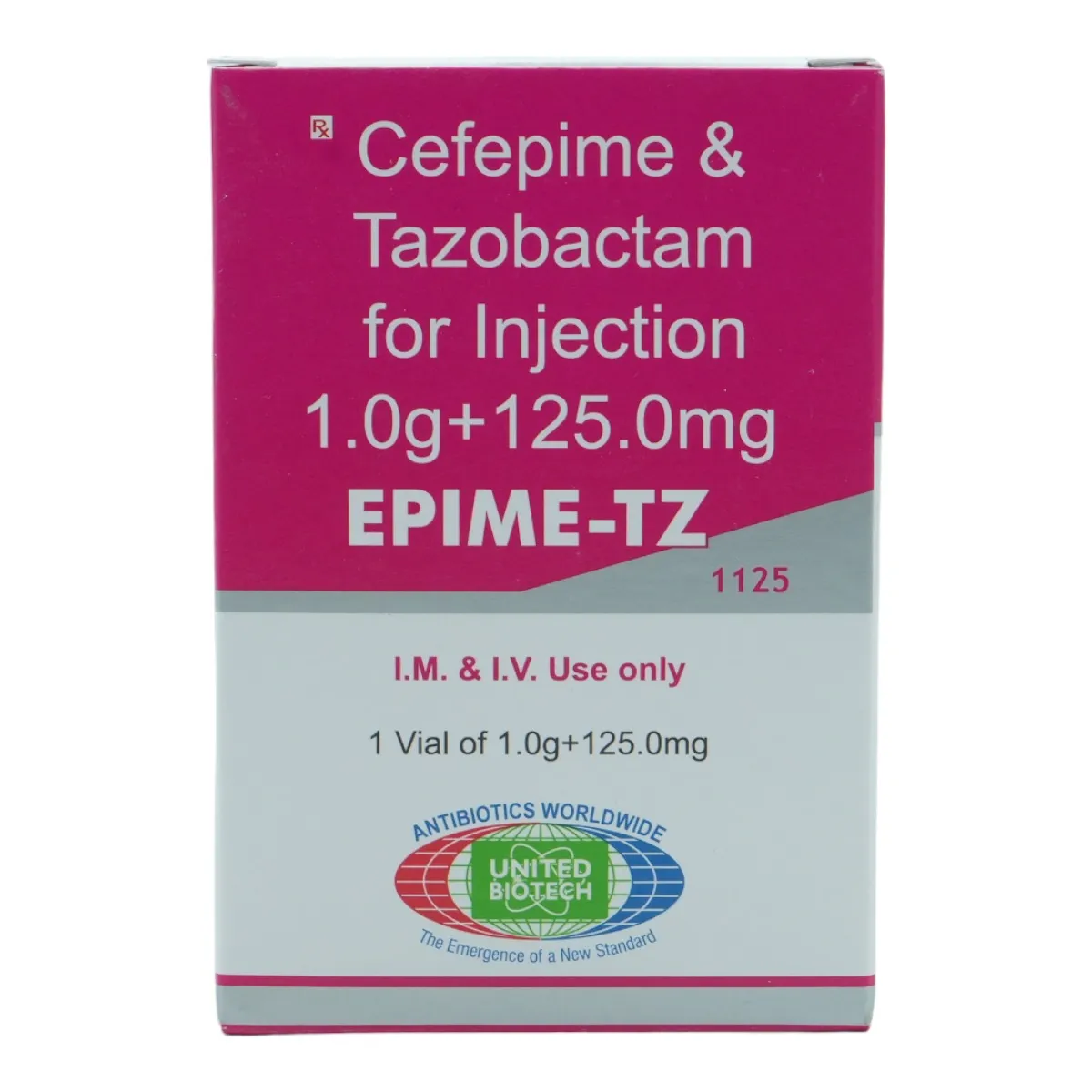💉 Cefepime 2000mg + Tazobactam 250mg Injection – Comprehensive Overview 🦠🩺
Introduction:
Cefepime 2000mg combined with Tazobactam 250mg is a potent intravenous (IV) antibiotic formulation used in hospital settings to treat a variety of serious bacterial infections. This combination leverages the strengths of Cefepime, a fourth-generation cephalosporin, and Tazobactam, a beta-lactamase inhibitor, to combat resistant pathogens effectively.
🧪 Pharmacological Profile
-
Cefepime: A broad-spectrum cephalosporin that inhibits bacterial cell wall synthesis, leading to cell lysis and death.
-
Tazobactam: Inhibits beta-lactamase enzymes produced by bacteria, protecting Cefepime from degradation and extending its antimicrobial spectrum.
Mechanism of Action:
The combination enhances the efficacy of Cefepime against beta-lactamase-producing organisms, including many Gram-negative and Gram-positive bacteria. Tazobactam’s presence allows Cefepime to maintain its activity against resistant strains, making this combination particularly valuable in treating complex infections.
📋 Clinical Indications
This combination is indicated for the treatment of:
-
Pneumonia: Community-acquired and hospital-acquired.
-
Urinary Tract Infections (UTIs): Including pyelonephritis.
-
Skin and Soft Tissue Infections: Such as cellulitis and wound infections.
-
Intra-abdominal Infections: Including peritonitis.
-
Bacteremia: Bloodstream infections.
-
Febrile Neutropenia: In immunocompromised patients.
💊 Dosage and Administration
-
Adult Dosage: 2000mg of Cefepime and 250mg of Tazobactam administered intravenously every 12 hours.
-
Administration: Reconstitute the powder with sterile water, then dilute with 0.9% sodium chloride or 5% dextrose. Administer over 30 minutes to 1 hour to minimize the risk of adverse reactions.
-
Duration: Typically 7 to 14 days, depending on the infection’s severity and patient response.
⚠️ Warnings and Precautions
-
Renal Impairment: Dosage adjustments are necessary in patients with renal dysfunction to prevent accumulation and toxicity.
-
Hypersensitivity: Patients with a history of allergic reactions to penicillins or cephalosporins may experience cross-reactivity.
-
Clostridium difficile-Associated Diarrhea (CDAD): Antibiotic therapy can disrupt normal gut flora, leading to overgrowth of C. difficile. Monitor for signs of persistent diarrhea.
-
Neurotoxicity: In patients with renal impairment, high serum concentrations may lead to encephalopathy, seizures, or confusion.
-
Superinfection: Prolonged use may result in overgrowth of non-susceptible organisms, including fungi.
🚫 Contraindications
-
Allergy: Known hypersensitivity to Cefepime, Tazobactam, cephalosporins, penicillins, or other beta-lactam antibiotics.
-
Severe Renal Impairment: Without appropriate dosage adjustments.
-
Neonates: Safety and efficacy have not been established in neonates.
🤒 Common Side Effects
-
Gastrointestinal: Diarrhea, nausea, vomiting.
-
Hematologic: Eosinophilia, thrombocytosis.
-
Injection Site Reactions: Pain, redness, or swelling.
-
Hepatic: Elevated liver enzymes.
🧾 Storage and Handling
-
Storage: Store the lyophilized powder at 2°C to 8°C (36°F to 46°F).
-
Reconstitution: Use sterile water for injection to reconstitute the powder.
-
Stability: Once reconstituted, the solution is stable for 24 hours at room temperature.
-
Disposal: Dispose of unused medication according to institutional protocols.
✅ Safety Advice
-
Monitoring: Regular monitoring of renal function, liver enzymes, and complete blood counts is recommended during therapy.
-
Hydration: Ensure adequate hydration to support renal function, especially in patients with pre-existing kidney conditions.
-
Drug Interactions: Be cautious when co-administering with nephrotoxic drugs, such as aminoglycosides, due to the increased risk of renal toxicity.
-
Pregnancy and Lactation: Use during pregnancy and breastfeeding should be considered only if the potential benefit justifies the potential risk to the fetus or infant.
-
Alcohol: Limit alcohol consumption, as it may exacerbate side effects like dizziness or gastrointestinal discomfort.
📝 Conclusion
Cefepime 2000mg combined with Tazobactam 250mg is a valuable therapeutic option for treating serious infections caused by resistant bacteria. Its broad-spectrum activity, enhanced by Tazobactam, makes it effective against a wide range of pathogens. However, careful consideration of patient-specific factors, including renal function and potential drug interactions, is essential to ensure optimal outcomes and minimize risks.
Note: This information is intended for educational purposes and should not replace professional medical advice. Always consult a healthcare provider for personalized guidance.

Reviews
There are no reviews yet.